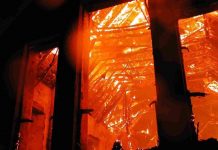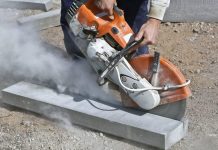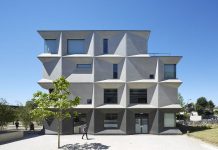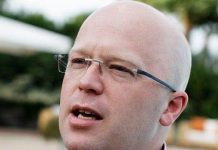Been there, done that, got the medal. Mark Thackeray, a Consultant at Walsingham Planning argues the case to have town planning restored to the Olympics
With the Rio Olympics a recent and glorious memory, let’s think back to an earlier golden age for British Olympians, a time when Team GB ruled the world and claimed the Gold Medal in a far more taxing and important event than horse dancing, synchronised smiling or slow cycling. The year is 1932, the place is Los Angeles, the event is town planning? And the winner, ahead of a dangerous Dane and a battling Belgian, was John Hughes of Great Britain for his work on a sports stadium and leisure centre in Liverpool.
Can it be true? Was it Anfield or Goodison Park that claimed the accolade of Gold Medal Arena? It was true, but it was neither as the stadium was never built. That’s the thing about planning as a profession – you train and train and train, and you put in a podium-finish performance on the day, but if no-one turns your dreams into reality, you are soon forgotten. When googled, our poor John Hughes (1903-1977) comes way down the list, beyond the John Hughes who directed Home Alone.
1932 was an Olympic year when, as you won’t recall, Team GB did not exactly cover itself with glory. John Hughes’ gold was one of only five that we achieved (town planning, men’s 800m, men’s 50,000m walk, coxless pairs and coxless fours if you want to know), so maybe his efforts deserve a belated “thank you” (if you’re listening, Claire Balding).
The Arts were celebrated at The Games between 1912 and 1948, and Team GB gloried in a total of nine medals over seven Olympiads, really hitting their stride in 1948, in London of course, when, in what might have been termed Amazing August, John Copley took the silver in engraving and etchings. Alfred Thomson won gold in paintings; Rosamund Fletcher was awarded a bronze medal in reliefs (for “The End of the Covert”) and who can forget Chintamoni Kar’s silver medal-winning statue “The Stag”. One might have felt especially sorry for Ms Fletcher who, justifiably proud of her bronze medal, may have been concerned to find that neither the gold nor the silver was even awarded, like coming third in a one-horse race. Times were particularly hard for our artist-athletes in those days, all the more so when the whole concept was dropped after 1948.
Thank heavens for the Royal Town Planning Institute and its annual, sought-after Placemaker Awards, not to be confused with the Laying-the-Table Oscars. If only the RTPI secured lottery funding, maybe placemaking could relive the glory days of L.A. in 1932. Maybe the BBC would jump on the bandwagon, with Strictly Come Placemaking or The Great British Placemaker. The opportunities open up before us, and ahead of the World Cup in 2018, maybe the RTPI can become official sponsors of the Team GB Placekicking Team. What’s in a name?
Art and artists continue to play an intriguing role in town planning and architecture, not least in the penchant for naming buildings as if they were statues. The Shard, The Gherkin and The Cheese-Grater, in presentation-model form, may well have given The Stag or The Sulky Driver (gold for sculpture 1936-Berlin) a run for their money.
At Walsingham Planning we’ve had a couple of run-ins with the Spencer family; Sir Stanley (1891-1959) and his lesser-known brother Gilbert (1892-1979). Stanley Spencer’s work in his home turf of Cookham is well-known, and rightly so, but his paintings of the area done in the 1930s have now formed the basis of a conservation area extension and the motivation for a local pressure group seeking to resist development in the area. All this despite the artistic licence used by Sir Stanley in his placement of local landmark buildings. Gilbert’s residence in Upper Basildon and his use of a shed in the back garden as an artist’s studio prompted, mid-appeal, the listing of the said structures and the dismissal of that appeal, in part, on the basis of a painting that Gilbert knocked off of the garden. You never know when art and planning are going to cross swords, but it is clear that works of art can indeed be material considerations. Better check before building that changing room by the swimming pool that David Hockney did not get there first.
Back to the Olympics and our efforts to have town planning restored to the event. It is, as we know, a multi-disciplined event and sadly, it is more often than not run over a long distance and with very slow performance times. With all due deference to Ms E-H and Ms J-T, the planning application process is at least a heptathlon. You start with the sprint, hoping that pre-app will be over quickly, though it rarely is. There are any number of hurdles races, though the submission, validation and consultation processes, with validation maybe the highest. For weeks you may be throwing stuff at the LPA, hoping that your persuasive arguments will travel farthest (shot putt) or skewer the opposition (javelin). There’s a long jump before you get to the committee, maybe with a couple of no-jumps along the way, and a high jump in dealing with the members’ curve ball questions on the night of the meeting. If all goes well, you struggle through to the last event, the long-distance haul that is the s106
Agreement and the discharge of conditions, never forgetting the anti-doping agency of the planning world, the judicial review. Hopefully, it’s a team event. Go, go, go Team TP.
If you can mix more metaphors than this in one article, then it would indeed be a PB and worthy of gold at the next Olympics. Roll on Tokyo 2020. Start training now!
Mark Thackeray BSc DipTP MRTPI
Principal Consultant
Walsingham Planning
mark.thackeray@walsingplan.co.uk
Please note: this is a commercial profile













